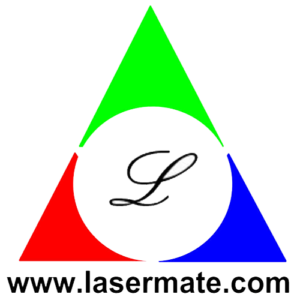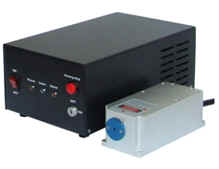Lasermate provides different laser sources specifically designed for Raman spectroscopy applications at different kinds of wavelengths and power levels to meet customer’s practical requirements.
Lasers for Raman Spectroscopy
Description
Raman spectroscopy is a spectroscopic technique used to determine vibrational modes of molecules, as it is able to show the spectrum for the materials characteristic and identification. Raman spectrum solution requires lasers with narrow spectral bandwidth, high spectral purity, high level of wavelength stability and high efficiency. As a general guide, laser sources at the ultraviolet wavelength range are ideal for resonance Raman on bio-molecules, such as proteins, DNA and RNA, fluorescence suppression. Laser sources at the visible range are perfect for inorganic materials and resonance Raman experiments (e.g., for carbon nanotubes and other carbon materials) and surface enhanced Raman scattering (SERS). Near-infrared laser sources are ideal for fluorescence suppression and high output power. Dual wavelength laser source for Raman Spectroscopy may be available upon request. Lasermate provides different laser sources specifically designed for Raman spectroscopy applications at different kinds of wavelengths and power levels to meet customer’s practical requirements.
Specifications
- RAM Series Fiber Coupled Narrow Linewidth Lasers (<0.06nm)
- DPNU Series Narrow Linewidth Low Noise DPSS Lasers (<0.003nm)
- SLM Series Single Longitudinal Mode Lasers (<0.00001nm)
- DLNE Series Narrow Linewidth Diode Lasers (<0.03nm)
Documentation
Typical Ultraviolet Lasers for Raman Spectroscopy
| Central Wavelength | Output Power | Typical Linewidth | Advantages |
| 257 ± 0.3 nm | 1-15mW | 0.1 | For resonance Raman on bio-molecules (such as proteins, DNA, and RNA), and fluorescence suppression. |
| 261 ± 0.3 nm | 1-5mW | 0.1 | |
| 320 ± 0.3 nm | 1-20mW | 0.1 | |
| 360 ± 0.3 nm | 1-200mW | 0.00001 |
Typical Visible Lasers for Raman Spectroscopy
| Central Wavelength | Output Power | Typical Linewidth | Advantages |
| 405 ± 0.5 nm | 1-100mW | 0.03 | For inorganic materials and resonance Raman experiments (e.g., for carbon nanotubes and other carbon materials) and surface enhanced Raman scattering (SERS). |
| 457 ± 0.3 nm | 1-2000mW | 0.003 / 0.00001 | |
| 473 ± 0.3 nm | 1-500mW | 0.003 / 0.00001 | |
| 488 ± 0.5nm | 1-150mW | 0.03 | |
| 514.5 ± 0.5 nm | 1-30mW | 0.03 | |
| 532 ± 0.3 nm | 1-10000mW | 0.003 / 0.00001 | |
| 633 ± 0.3 nm | 1-100mW | 0.03 | |
| 660 ± 0.3 nm | 1-200mW | 0.03 |
Typical Infrared Lasers for Raman Spectroscopy
| Central Wavelength | Output Power | Typical Linewidth | Advantages |
| 785 ± 0.5 nm | 1-450mW | 0.06/ 0.03/ 0.0001 | For fluorescence suppression, high output power. |
| 808 ± 0.5 nm | 1-450mW | 0.03 | |
| 830 ± 0.5 nm | 1-450mW | 0.03 | |
| 980 ± 0.5 nm | 1-450mW | 0.03 | |
| 1064 ± 0.3 nm | 1-10000mW | 0.00001 |


